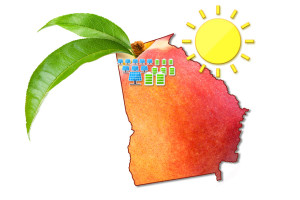Facts, Figures, and Findings from EPRI Research, Reports, and Other Sources

How a Series of Hydroelectric Plants Can Operate As One
A new modeling approach for real-time hydropower plant scheduling and operations has potential to optimize hydro generation and balance wind power variability. Because flows from upriver hydropower plants can affect energy output of downstream plants, coordinated control of multiple facilities in a region can increase their overall efficiency. With EPRI funding, researchers at Carnegie Mellon University developed a model that can operate a group of plants as a unified system, helping maintain stable flows and reservoir elevations and maximizing hydraulic heads. With historical flow data, the team tested the model ...
Read More
A new modeling approach for real-time hydropower plant scheduling and operations has potential to optimize hydro generation and balance wind power variability. Because flows from upriver hydropower plants can affect energy output of downstream plants, coordinated control of multiple facilities in a region can increase their overall efficiency. With EPRI funding, researchers at Carnegie Mellon University developed a model that can operate a group of plants as a unified system, helping maintain stable flows and reservoir elevations and maximizing hydraulic heads. With historical flow data, the team tested the model ...
Read More

EPRI-University of Tennessee Team Named Finalist in Competition to Build a Smaller Inverter
An inverter designed and built by EPRI and the University of Tennessee is one of 18 finalists in the Little Box Challenge, sponsored by Google and IEEE Power Electronics Society. The competition requires entrants to build a 2-kilowatt inverter ten times smaller than today's commercial models. Following testing by the National Renewable Energy Laboratory, the winning inverter will be announced in January 2016. EPRI led the thermal design and management, and the University of Tennessee led the electrical design. Inverters are key for integrating the grid and ...
Read More
An inverter designed and built by EPRI and the University of Tennessee is one of 18 finalists in the Little Box Challenge, sponsored by Google and IEEE Power Electronics Society. The competition requires entrants to build a 2-kilowatt inverter ten times smaller than today's commercial models. Following testing by the National Renewable Energy Laboratory, the winning inverter will be announced in January 2016. EPRI led the thermal design and management, and the University of Tennessee led the electrical design. Inverters are key for integrating the grid and ...
Read More

Leaching Improves Economics of Fuel Production
Treated secondary biomass can generate energy at a cost comparable to that of natural-gas-fired power production, according to an EPRI study. When biomass is combusted for energy generation or converted to liquid fuels, its inorganic constituents can result in corrosion, deposition of materials, and other equipment degradation. Treating biomass to remove these substances can reduce or eliminate these problems for a more cost-effective process. Since 2010, EPRI and Thermorefinery Technologies have evaluated the effects of proprietary leaching and torrefaction processes on secondary biomass. They found that leaching removes all or most sulfur, chlorine, alkali ...
Read More
Treated secondary biomass can generate energy at a cost comparable to that of natural-gas-fired power production, according to an EPRI study. When biomass is combusted for energy generation or converted to liquid fuels, its inorganic constituents can result in corrosion, deposition of materials, and other equipment degradation. Treating biomass to remove these substances can reduce or eliminate these problems for a more cost-effective process. Since 2010, EPRI and Thermorefinery Technologies have evaluated the effects of proprietary leaching and torrefaction processes on secondary biomass. They found that leaching removes all or most sulfur, chlorine, alkali ...
Read More

Interest in Pumped Storage Hydropower Grows in Many Countries
Grid operators are taking a closer look at pumped storage hydropower to balance growing intermittent renewable generation, according to an EPRI review of the technology. Compared to newer, battery-based energy storage technologies, electric utilities are more familiar with pumped storage hydropower and its operational and maintenance requirements. Global capacity is projected to nearly double from 147 gigawatts in 2015 to 284 gigawatts in 2025. First deployed in North America in 1929, this mature technology accounts for more than 90% of the world’s grid-scale storage capacity. During off-peak demand when power is ...
Read More
Grid operators are taking a closer look at pumped storage hydropower to balance growing intermittent renewable generation, according to an EPRI review of the technology. Compared to newer, battery-based energy storage technologies, electric utilities are more familiar with pumped storage hydropower and its operational and maintenance requirements. Global capacity is projected to nearly double from 147 gigawatts in 2015 to 284 gigawatts in 2025. First deployed in North America in 1929, this mature technology accounts for more than 90% of the world’s grid-scale storage capacity. During off-peak demand when power is ...
Read More

Southern Company and EPRI to Look at Shifting Production, Response, and Integration
Insights from a new multiyear, grid-scale energy storage demonstration project could find their way into an energy system that relies much more on solar and energy storage. EPRI and Southern Company will evaluate the operation and benefits of a 2-megawatt-hour lithium ion storage system integrated with a 1-megawatt solar photovoltaic facility in Cedartown, Georgia. Southern Company is operating the system and conducting tests, and EPRI is supporting data gathering and analysis. LG Chem provided the batteries. EPRI and Southern Company will investigate the ability of grid-scale batteries to ...
Read More
Insights from a new multiyear, grid-scale energy storage demonstration project could find their way into an energy system that relies much more on solar and energy storage. EPRI and Southern Company will evaluate the operation and benefits of a 2-megawatt-hour lithium ion storage system integrated with a 1-megawatt solar photovoltaic facility in Cedartown, Georgia. Southern Company is operating the system and conducting tests, and EPRI is supporting data gathering and analysis. LG Chem provided the batteries. EPRI and Southern Company will investigate the ability of grid-scale batteries to ...
Read More

